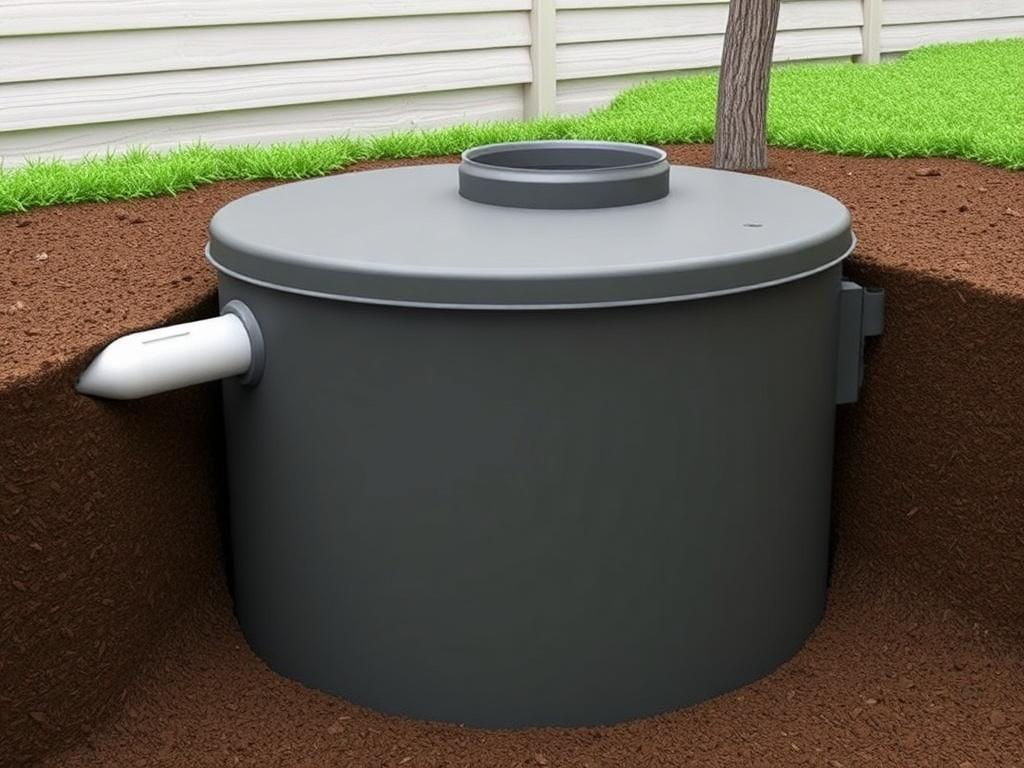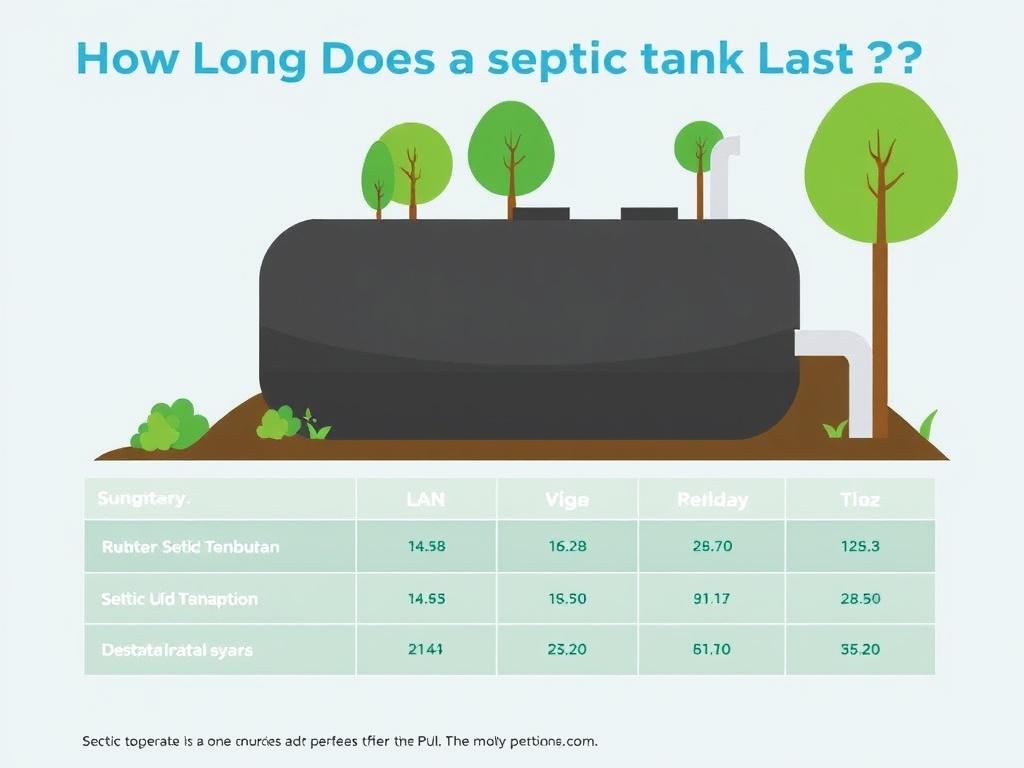Septic tanks play a crucial role in many homes, especially those located in rural or suburban areas without access to a municipal sewer system. If you’re one of the many homeowners relying on a septic system, a common question arises: how long does a septic tank last? Understanding the lifespan of a septic tank can help you plan maintenance, foresee replacement needs, and avoid costly repairs or unexpected failures. In this article, we’ll dive deep into all aspects surrounding the longevity of septic tanks, covering everything from typical lifespan ranges and common signs of aging to best practices for extending the life of your system.
- What Is a Septic Tank and How Does It Work?
- Typical Lifespan of a Septic Tank
- Factors That Influence How Long a Septic Tank Lasts
- 1. Installation Quality
- 2. Household Size and Water Usage
- 3. Maintenance and Pumping Schedule
- 4. Soil and Environmental Conditions
- 5. Chemical and Waste Input
- 6. Age and Wear
- Signs Your Septic Tank May Need Replacement
- How to Extend the Life of Your Septic Tank
- Regular Maintenance
- Water Conservation
- Proper Waste Disposal
- Protect Your Drain Field
- Use Bacteria Additives Carefully
- Cost Considerations: Repair vs. Replacement
- Innovations and Alternatives to Traditional Septic Tanks
- Advanced Treatment Units
- Alternative Materials
- Septic System Monitoring Technology
- Summary Table: Key Takeaways on Septic Tank Lifespan
- Conclusion
What Is a Septic Tank and How Does It Work?
Before we get into the lifespan specifics, let’s briefly explore what a septic tank actually is and how it functions within your home’s wastewater system. A septic tank is an underground chamber made typically from concrete, fiberglass, or polyethylene. It collects wastewater coming from your home’s drains, including sinks, toilets, and washing machines. The tank’s primary function is to separate solids from liquids, break down organic matter through bacterial action, and allow treated effluent to drain into a designated leach field or drain field for natural filtration.
Because septic tanks are buried and out of sight, they often go unnoticed until problems arise. This out-of-mind nature tends to make understanding their maintenance needs and lifespan all the more important. The average septic system includes three main components:
- A septic tank – holds wastewater and processes solids
- A drain field – disperses liquid effluent safely into the soil
- Pipes and plumbing – transport wastewater between the house, tank, and drain field
Typical Lifespan of a Septic Tank
So, how long does a septic tank last in general? The answer depends on several variables, including the material of the tank, installation quality, usage patterns, and how well the system is maintained. Here’s a quick table summarizing the expected lifespan of common types of septic tanks:
| Septic Tank Material | Estimated Lifespan | Comments |
|---|---|---|
| Concrete | 30-40 years | Most common, durable but can crack if not properly maintained. |
| Fiberglass | 40+ years | Lightweight and resistant to corrosion, but vulnerable to damage if exposed to heavy loads. |
| Polyethylene (Plastic) | 30-40 years | Resistant to cracking and rust, but can float if groundwater level is high. |
| Steel | 10-20 years | Prone to rust and corrosion, considered less reliable for long-term use. |
As you can see, concrete, fiberglass, and polyethylene tanks tend to offer the longest service with proper care. Steel tanks, once popular, have largely fallen out of favor due to their shorter lifespan and maintenance challenges.
Factors That Influence How Long a Septic Tank Lasts
Now that we have a general idea of lifespan ranges based on materials, it’s important to understand the other crucial factors that dictate how long a septic tank lasts beyond its base material.
1. Installation Quality
An improperly installed septic system can lead to premature failure regardless of the tank type. Even the highest-quality materials will not perform well if the tank is not buried at the correct depth, if the soil conditions are unsuitable, or if the pipes connecting the tank and drain field are poorly fitted. For example, if the drain field is compacted or overloaded, effluent can back up, causing damage to the tank or nearby soil saturation issues.
2. Household Size and Water Usage
The more people living in a household—and the higher the water consumption—the more frequently the septic tank fills up. Flushing excessive water through the system can overload the tank’s capacity, reducing its lifespan by increasing the frequency of necessary pumping and heightening wear on internal components.
3. Maintenance and Pumping Schedule
Regular septic tank pumping is essential to keep the system functioning optimally. Over time, solid waste accumulates as sludge at the bottom of the tank and as scum on the surface. If these layers become too thick, they can clog the outlet pipes or leach field, causing backups. Experts generally recommend having your septic tank inspected every 3 years and pumped every 3 to 5 years, depending on usage and tank size.
4. Soil and Environmental Conditions
The soil type where your septic system is installed affects both the drain field’s function and the tank’s structural integrity. Sandy or permeable soils promote proper drainage, whereas clay or dense soils can retain moisture, leading to saturation and system overload. Environmental factors such as flooding, high groundwater levels, or freeze-thaw cycles can also accelerate damage.
5. Chemical and Waste Input
What goes down your drains matters significantly. Harsh chemicals, grease, non-biodegradable materials, and excessive bleach can kill the beneficial bacteria needed to break down waste inside the tank. These chemicals can also corrode tank materials or harm the drain field, shortening your septic tank’s lifespan.
6. Age and Wear
Simply put, all septic tanks degrade over time due to natural wear and exposure. Concrete tanks may crack or develop leaks, while fiberglass and plastic tanks can become brittle or dislodged. Once a system reaches the end of its design life, failures become more frequent and costly to repair.
Signs Your Septic Tank May Need Replacement
Knowing the typical lifespan and factors affecting septic tanks is all well and good, but what are the actual signs that your septic tank is nearing the end of its usable life? Here are some common warning signs to watch for:
- Slow draining sinks and toilets – Wastewater takes longer to leave your drains.
- Backups or sewage odors – You notice unpleasant smells near your drain field or inside your home.
- Pooling water or soggy ground – Wet spots or lush grass growing rapidly above the drain field.
- Cracks or damage to tank components – Visible cracks, leaks, or structural damage, if your tank is accessible.
- Frequent need for pumping – You have to pump your tank more often than usual.
- Failing drain field – Effluent is not dispersing properly leading to backups.
If you experience one or more of these symptoms, it’s crucial to contact a professional septic service provider for inspection and repair recommendations.
How to Extend the Life of Your Septic Tank

While some factors are beyond control, there are plenty of simple steps you can take to protect your septic system and get the most out of its lifespan:
Regular Maintenance
Set a schedule to have your septic tank inspected and pumped regularly. Most experts agree on inspection every 3 years and pumping every 3-5 years. Keeping sludge levels low prevents clogs and damage.
Water Conservation
Reducing water usage lessens the load on your septic system. Fix leaky faucets, install water-efficient fixtures, and spread out laundry loads instead of running multiple loads back-to-back.
Proper Waste Disposal
Avoid flushing grease, coffee grounds, feminine hygiene products, diapers, or chemicals down toilets and drains. Only flush human waste and toilet paper.
Protect Your Drain Field
Do not park vehicles or build structures over your drain field. Avoid planting trees or shrubs nearby as roots can infiltrate and damage pipes.
Use Bacteria Additives Carefully
Some people use bacterial additives to boost septic tank bacteria health. While research is mixed, maintaining proper waste input and avoiding chemicals is the best approach.
Cost Considerations: Repair vs. Replacement
Understanding when a septic tank needs repair and when replacement is the better option is important for budgeting. Repairs like crack sealing or pipe replacement can extend a tank’s life temporarily but may be costly and inconvenient. If your septic tank is near or past its expected lifespan and showing severe damage or frequent failure, replacement is often more economical in the long term.
Here’s a rough cost breakdown:
| Service | Typical Cost Range (USD) | Notes |
|---|---|---|
| Septic Tank Pumping | $250 – $500 | Depends on tank size and location |
| Minor Repairs (pipes, baffles) | $300 – $1,000 | Variable depending on damage |
| Septic Tank Replacement | $3,000 – $10,000+ | Includes tank, installation, and permits |
| Drain Field Replacement | $5,000 – $15,000+ | Can exceed tank replacement cost |
As you can see, investing in regular maintenance can save you thousands by postponing or avoiding full replacement.
Innovations and Alternatives to Traditional Septic Tanks
The septic tank industry has also evolved, offering more advanced and durable options that can affect lifespan calculations.
Advanced Treatment Units
Some modern septic systems incorporate aerobic treatment or filtration units that treat wastewater more thoroughly, extending the overall system life and reducing drain field stress.
Alternative Materials
Newer septic tank materials like high-density polyethylene (HDPE) and reinforced fiberglass improve resistance to corrosion and cracking.
Septic System Monitoring Technology
Smart monitoring devices are available that alert homeowners to system failures or sludge buildup, allowing proactive maintenance and potentially prolonging life.
Summary Table: Key Takeaways on Septic Tank Lifespan

| Aspect | Expected Lifespan / Advice |
|---|---|
| Concrete Tank | 30-40 years with good maintenance |
| Fiberglass Tank | 40+ years but handle with care |
| Polyethylene Tank | 30-40 years; watch out for high groundwater |
| Steel Tank | 10-20 years; generally not recommended |
| Maintenance Frequency | Inspect every 3 years; pump every 3-5 years |
| Common Failure Signs | Slow drains, odors, wet spots, frequent pumping |
| Cost to Replace | $3,000 to $10,000+ depending on system size & location |
Conclusion

To sum up, how long a septic tank lasts depends on a variety of factors including tank material, how well it’s installed, household water usage, and critically, ongoing maintenance. Concrete and fiberglass tanks generally have the longest lifespan, often exceeding 30 years when properly cared for. Steel tanks, on the other hand, tend to last much shorter due to corrosion. The key to extending your septic tank’s life lies in regular inspections and pumping, mindful use of your drains, and protecting the drain field from damage. Being proactive can not only maximize the lifespan of your septic system but also save you from costly repairs or replacements later on. In many cases, understanding the signs of wear and knowing when to call in a professional can make all the difference between a smoothly operating system and a septic disaster. Whether you’re a new homeowner or have had a septic system for years, investing some time and care into your system’s health goes a long way in ensuring longevity and peace of mind.
Помогла вам статья?






